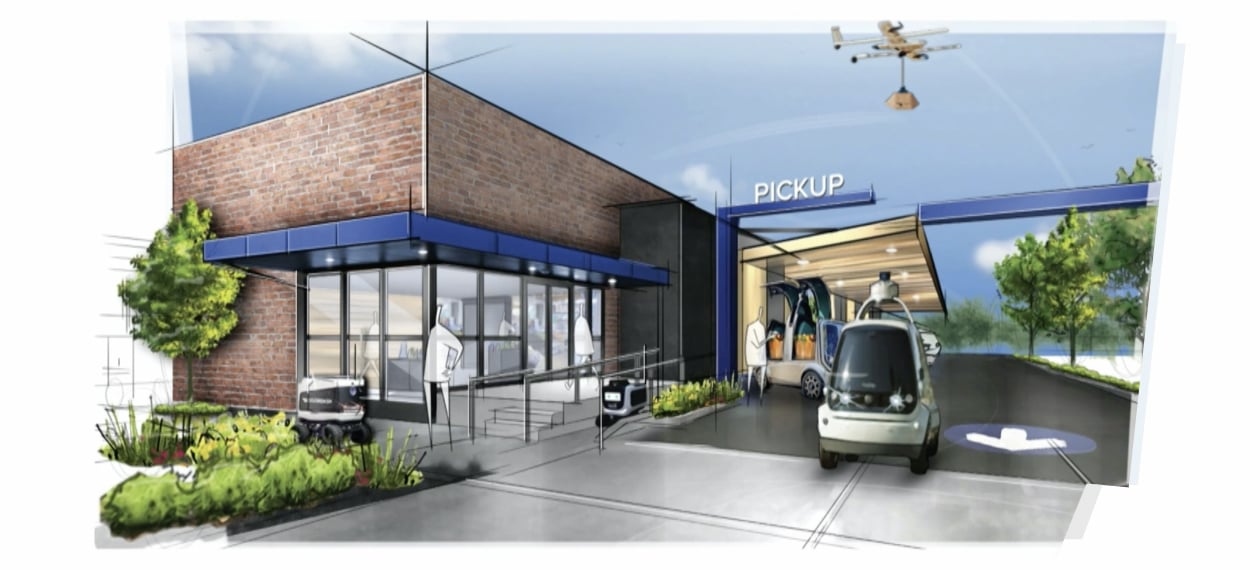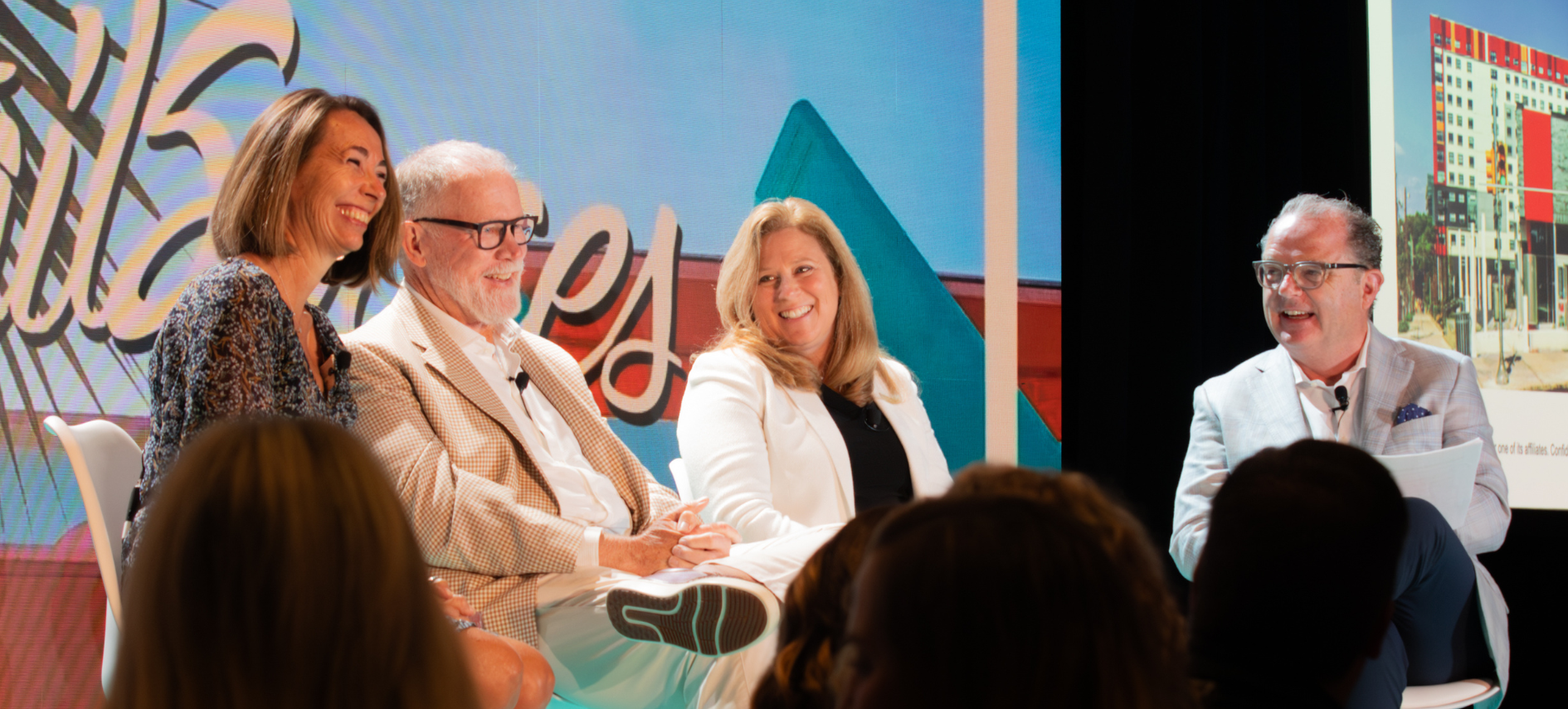The store of the future is a concept discussed year after year. Meanwhile, it’s becoming increasingly difficult to pin down exactly how the consumer will be tomorrow, let alone a few years from now.
2020 has complicated things further. Widespread store closures due to the pandemic and a growing reliance on online shopping have caused retailers to reevaluate everything. Against this backdrop, the idea of the store of the future doesn’t hold up so well. The store of the future, in fact, isn’t a store at all.
Speaking at RetailSpaces (Almost) Live, Lee Peterson, Executive Vice President of Thought Leadership at WD Partners, outlined several possible futures for the physical retail format
"Let's not go back to the way things were," he said. "This is an opportunity to start fresh, to rethink what we'd been thinking before, and accept new thinking."
With that in mind, Peterson highlighted a number of ways in which consumers' new shopping habits will influence how retailers get to the actual “store of the future.”
The New Realities of Today’s Online World
As stores across the country were forced to shut their doors amid the pandemic, consumers turned their attention to online shopping.
"Digital sales growth was stronger than expected," Peterson said of online sales last quarter. "If you didn't have eComm set up really well, you were in really big trouble."
In fact, stores like Walmart, Dick's Sporting Goods, Bath & Body Works, and Target saw triple-digit percentage increases in sales during that time.
"People are definitely shopping online, that is definitely a key component of all of this," Peterson said.
These online sales aren't just for delivery to home, either. Peterson points out there has been a significant increase in BOPIS, or buy-online-pickup-in-store shopping.
Peterson noted that consumer sentiment around online shopping or BOPIS has also changed during the pandemic in a way that will shape the future.
Last year, when survey respondents were asked how they prefer to shop, only 25 percent said not in-store, preferring to either shop online for delivery to their home or pick up at the store.
In June 2020, that same question received a 52 percent response, with consumers preferring not to step foot into retailers' physical locations.
"This is one of those things where we had a cataclysmic event, but it really affected the way consumers think and the way they shopped," Peterson said. "If you think we're going back to normal, think again. Basically, you have to rethink what physical stores are all about."
Moving Forward
In order to satisfy new expectations customers have around shopping experiences, retailers will need to reconfigure their portfolio strategy.
For instance, when WD Partners asked consumers to rank dark stores, approval ratings were as high as 35 to 50 percent. These types of responses from consumers, he said, begin to paint a picture of how retail needs to evolve.
"Is this the future of retail? You pull up in a space, there are electric vehicles and drones… is this the future of retail?" Peterson asked. "Our answer right now, partially, is yes. This is the future of retail."
If consumers are saying they want to shop in three or four different ways, retailers will need to have all of them available. Otherwise, Peterson hit home, they’re going to go somewhere else.
Going Dark
Given consumers’ desire to spend less time in-store, coupled with the approval ratings their seeing, Peterson notes that dark stores are an important piece of the puzzle.
Dark stores are retail locations, like fulfillment centers, that are only used for online order and pickup transactions. Consumers never enter the space.
"Some people call these dark stores, but fulfillment centers go a long way," Peterson said. "In this instance, you pull up on the right and someone brings your order out."
The inside looks like a warehouse, where all orders are on top electronically and there are no pickers running around customers, Peterson said. In urban areas, a locker concept could be used for pickup within a dark store.
"As we know, everyone likes BOPIS, so it's a great option," he said.
A Hybrid Approach
"Hybrids will also be really important," he said. "You pull up, you have groceries put in the car in the back of the store, but you could also shop at the store."
Peterson showed an example of this concept where customers could shop for groceries on the left side of the building, while a complete fulfillment center is located on the right, allowing a customer to pull up and have groceries put in their trunk.
The concept, Peterson said, had an 80 percent acceptance rate with consumers surveyed.
Big box stores and even shopping centers could also undergo such a transformation. In an example, Peterson noted that the front of the building would be dedicated to in-store shopping, while the back features a fulfillment center for online orders.
Pickup of those orders could then be concentrated to one side of the building, while the other is available for customers parking to go inside to shop.
"Target is doing something like this now. They are fulfilling 80 percent of their online orders in the backroom,” he said. “That's definitely going to happen."
The hybrid model could also be used in the restaurant format, where customers could enter a grab-and-go lane or an express lane. The full restaurant would be featured in the back of the building.
Dedicated Experiential Concepts

For specialty retailers who can simply ship to home or are currently doing tremendous business in eCommerce, there needs to be a lot more experimentation with what’s possible in-store.
Showroom stores, Peterson mentioned, is a concept that has tested well with consumers and a strategy these retailers can afford to try.
"You can try something out and have it shipped, then have something like a coffee bar, game room that becomes purely experience," he said.
This could also work for flagship stores, like Nike, where customers can touch products, try products on, and talk to experts.
Rework for the Customer
Reworking retail to fit the customer's demands means that some companies will create a mix of dark stores, hybrid stores, and experience showrooms in the future.
"If you have existing stores right now… some of the stores you have could be converted or opened as dark stores," Peterson said.
Then a smaller number of locations could be opened as a hybrid model, fulfilling orders in the back and offering in-store experiences in the front.
The fewest number of stores in the area could be dedicated to experiences or showrooms for customers who prefer shopping leisurely.
"This type of organization is what customers are looking for," Peterson said. "This is based on what the customer wants, they want BOPIS, showroom stores. You have to rework to the customer. We see that as the way forward."

Posted by
Physical Retail Reimagined.
RetailSpaces is a community for store development and design innovators.
March 29-31, 2026 | San Antonio, TX
Learn More!








Comments